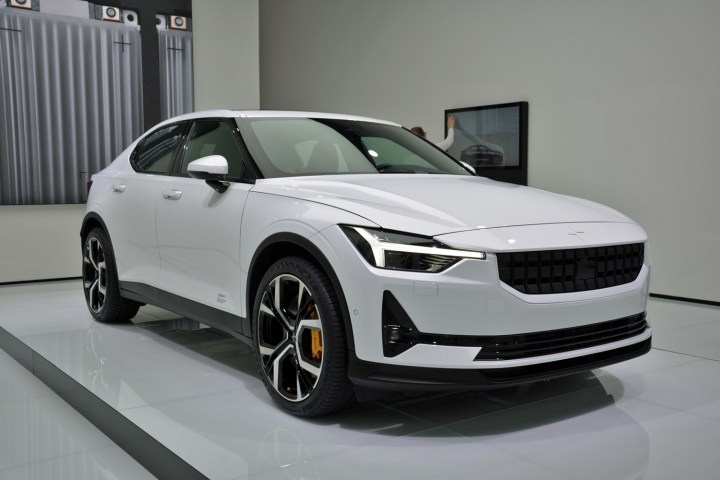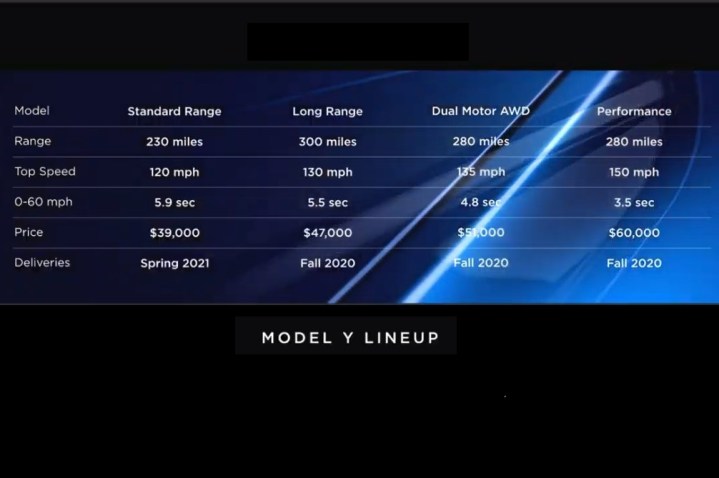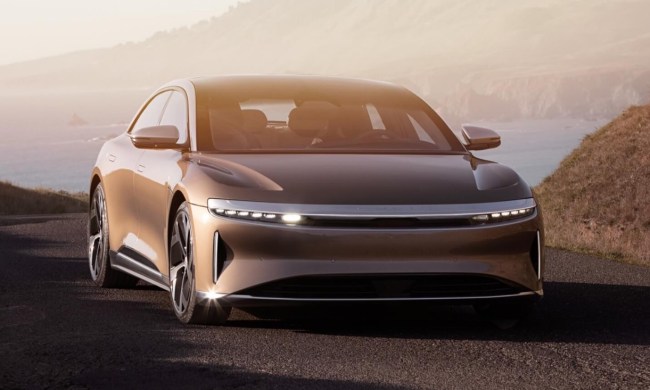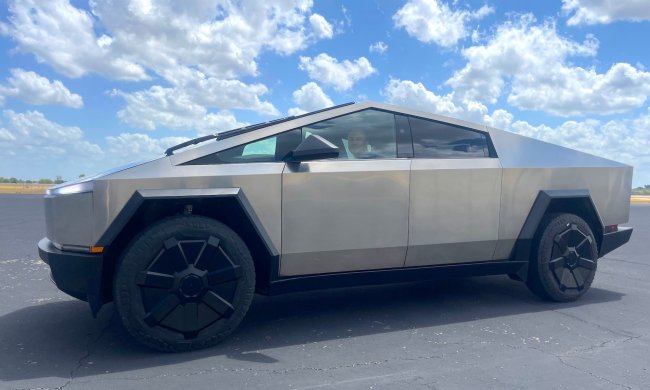Electric cars are expected to become increasingly common on American roads in the coming years. Government regulations and incentives are helping to drive the rate up, and consumer preferences are slowly shifting, so carmakers are going to significant lengths to ensure there’s a battery-powered model available for every motorist, regardless of whether you spend your weekends hunting, hiking, road-tripping, or running errands.
We’ve compiled a list of every available electric car, ranked by alphabetical order, and listed its range, as well as its base price before available incentives are factored in. If you’re wondering where the Kia Soul is or why the Tesla Cybertruck isn’t on here, keep in mind that we’re only including cars you can currently buy and take delivery of right now. Kia delayed the battery-powered Soul’s American launch until 2021, and the Cybertruck is even further away. You’ll find a complete list of the electric cars that will be released in the early 2020s on our dedicated page.
Further reading
Audi E-Tron

Base range: 222 miles
Base price: $65,900
Audi took a different path to the electric car segment than most of its rivals. The E-Tron looks and drives like a regular SUV, but it does so without burning a drop of gasoline. Nothing about it screams, “I’m electric,” which is exactly what the firm wanted to achieve. Instead, it offers an electric car-specific version of Audi’s intuitive MMI Touch Response infotainment system and the high build quality we’ve come to expect from a car with the four-ring emblem on its nose. It’s silent, quick, big enough for a family, and reasonably entertaining to drive.
Audi E-Tron Sportback
Base range: 218 miles
Base price: $69,100
The Sportback is a swoopier evolution of the E-Tron that trades practicality for style. Its fastback-like body surfs the SUV-coupe wave sweeping across the industry, but it’s nearly identical to its more spacious sibling under the sheet metal. Don’t look for the cool, pod-mounted rearview cameras on this side of the pond. They’re still illegal, so Audi will need to fit regular door mirrors before sending the E-Tron Sportback to the American market.
BMW i3

Base range: 153 miles
Base price: $44,450
BMW was one of the pioneers in the electric luxury car segment, and the i3 remains one of the most advanced cars on the market today. The basic structure it’s built around is made with carbon fiber to keep weight in check, and we love its interior, which features natural materials like bamboo. And while its basic design has changed little since its introduction in 2013, its powertrain has received updates regularly.
The range includes the regular i3, which puts 170 horsepower under your right foot, or the sportier 180 hp i3s. Both use the same lithium-ion battery pack and offer the same amount of driving range. Motorists planning longer trips can select the optional, gasoline-powered range extender, but their i3 will lose the EV label.
Chevrolet Bolt

Base range: 259 miles
Base price: $36,620
One of the best all-around options in the electric car segment, the Bolt stands out as Chevrolet’s first regular-production electric car. It was developed to look and feel like a regular commuter car that happens to run on electricity. It’s safe, it offers passengers a spacious cabin with intuitive tech features, and it boasts a usable amount of range. If you’re looking to go electric with a minimal amount of fuss, put the Bolt near the top of your list.
Hyundai Ioniq Electric
Base price: $33,045
Base range: 170 miles
Hyundai uniquely offers the Ioniq with three powertrain types. It’s available as a hybrid, as a plug-in hybrid, and as an electric vehicle. They’re all more or less identical inside and out, meaning they’re characterized by a humble and inoffensive design, and their interior feels as solid as any other Hyundai’s. Its 170-mile range isn’t class-leading, but depending on how and where you drive, it might be enough for a week’s worth of commuting.
We want to emphasize the “where” part of that last sentence. While the hybrid variants of the Ioniq are available nationwide, the electric model is only sold in California, Connecticut, Maine, Maryland, Massachusetts, New Jersey, New York, Oregon, Rhode Island, and Vermont. Nothing prevents, say, a Utah resident from flying to San Francisco and driving home in one, but that’s a lot of work considering there are other competent EVs sold in all 50 states.
Hyundai Kona Electric
Base price: $37,190
Base range: 258 miles
The electric version of Hyundai’s Kona crossover is one of the better-rounded entries into the EV segment. We consider it right-sized, meaning it’s big enough to fit your friends and a weekend’s worth of gear, but it’s compact enough to zip through parking garages, and its 258-mile range rating is one of the best at this price point. Its price is contentious, though. While Hyundai charges $20,400 for the regular, gasoline-sipping Kona, you’ll need to sign a check for $36,990 for the electric model. Federal incentives sweeten the deal — when they’re available.
Jaguar I-Pace

Base price: $69,850
Base range: 246 miles
Digital Trends selected the Jaguar I-Pace as our car of the year in 2018, which says a lot. This segment-bending crossover takes full advantage of the different packaging layouts made possible by an electric powertrain. It blurs the line between a crossover and a sedan. It’s quick off the line thanks to its dual-motor, 394 hp drivetrain, it handles well considering its size and weight, and we like the technology packed in it. It’s not the most practical electric car on the market, but it’s one you’ll enjoy driving regardless of where the road takes you.
Kia Niro EV

Base price: $39,090
Base range: 238 miles
With up to 239 miles of range and a 10-year, 100,000-mile warranty that covers the battery, the Kia Niro EV is an electric car you won’t have to worry about for many years. It’s based on the regular, gasoline-powered Niro, so it’s practical, and it benefits from Kia’s exponential improvement in build quality. Like the Hyundai Kona, the trade-off is that it’s stunningly expensive, even after incentives enter the equation. At $39,090, the electric variant of the Niro costs about $15,000 (the price of a new Nissan Versa) more than the entry-level model.
Mini Cooper SE

Base range: 110 miles
Base price: $29,900
The lessons BMW learned from making electric Mini prototypes in the late 2000s helped it create the i3, and the technology came back to the British brand in 2020. The Mini Electric uses parts sourced from the i3, including a 32.6-kilowatt-hour lithium-ion battery pack, to put an electrified spin on the go-kart-like feeling the model is known for. Its range is low, so it’s best suited to urban use, but quick-charging makes it more drivable than it sounds.
Nissan Leaf
Base range: 149 miles
Base price: $31,600
Nissan planted its flag in the electric car segment before it was cool, and the head start allowed it to stay ahead of its rivals for years. Now well into its second generation, the Leaf remains a sensible choice for buyers seeking a relatively affordable electric car without sacrificing range or technology. It entered the 2020 model year with more driver-assistance technology, infotainment upgrades, and a correspondingly higher price.
There are two variants available: The standard 147 hp Leaf with 149 miles of range and the Leaf Plus, which bumps the aforementioned figures to 214 and 226, respectively, thanks to a more powerful electric motor and a bigger lithium-ion battery pack. Note that the Plus starts at $38,200.
Polestar 2

Base range: 233 miles
Base price: $59,900
The plug-in hybrid 1 is the only Polestar model you’ll ever see at a gas station. Starting with the 2, every car the Volvo-owned company releases will be electric. It’s a little bit taller than a standard sedan, it almost reminds us of the short-lived S60 Cross Country, and it competes in a segment currently dominated by the Tesla Model 3.
While the 2 is quick, silent, and sharp to drive, Digital Trends was even more impressed by its Android-powered, touchscreen-based infotainment system, which we found highly intuitive to use and feature-rich. The in-car version of Google Assistant appears in the 2 for the first time, and phone-as-key technology makes sharing the car as easy as sending a text message. Built in China, the Polestar 2 carries a base price of $59,900 before incentives.
Porsche Taycan

Base range: 201 miles
Base price: $103,800
Porsche aimed the Taycan, its first series-produced electric car, right at the Tesla Model S. It’s available in three variants named 4S, Turbo, and Turbo S, respectively, and each one offers the blend of organ-displacing performance and the wall-to-wall luxury Porsche is known for. The Turbo model’s 201-mile range falls short of the Tesla’s, and the Turbo S falls under the 200-mile mark, but does it matter? It depends on who you ask. Most Americans don’t drive 200-plus miles in a day, and most shoppers in the market for a six-digit sedan have a home charger.
Besides, Porsche hired independent testing company AMCI to obtain a second range number, and the Taycan received a 275-mile rating in mixed driving. As always: Your mileage may vary. Literally, this time.
Tesla Model 3

Base range: 250 miles
Base price: $37,990
The Model 3 is Tesla’s greatest hit, though it might lose that status when the Model Y reaches the market. It’s smaller and more affordable than the Model S, though Tesla doesn’t sell the $35,000 variant it promised, yet it’s just as high-tech, if not more. Its dashboard is dominated by a giant touchscreen used to control everything from the navigation system to the windshield wipers. Early cars were plagued with problems, but Tesla has seemingly figured out how to build the 3, and it’s one of the most popular electric cars worldwide.
Sold exclusively online, like all of Tesla’s cars, the Model 3 comes in three flavors called Standard Range Plus, Long-Range, and Performance. Driving range varies between 250 and 322 miles, while the quickest member of the lineup takes a supercar-like 3.2 seconds to sprint from zero to 60mph.
Tesla Model S

Base range: 402 miles
Base price: $69,420
Released in 2012, the Model S transformed Tesla from an unknown niche automaker to a significant player on the global stage. Elon Musk’s team has done a good job of keeping the model fresh despite its age. As of 2020, the ever-changing lineup includes a Long-Range Plus model with 391 miles of range and a Performance variant that loses 43 miles while gaining a 2.4-second zero to 60mph, a figure that makes it one of the quickest cars in the world. If that’s not enough, rest assured: There’s an even quicker model on the horizon.
Keep in mind that Tesla buyers are no longer eligible to claim a federal tax credit. State incentives might still apply.
Tesla Model X

Base range: 371 miles
Base price: $79,990
The Model X’s trick falcon doors didn’t do it any favors, and industry watchdog Consumer Reports has persistently criticized them for being problematic and slow to operate. It’s quick, however, and the Long-Range Plus model can drive for up to 371 miles on a charge, but Consumer Reports sums it up well by calling the X more showy than practical.
Tesla Model Y

Base range: 326 miles
Base price: $49,990
The Model Y unveiled in 2019 is to the Model 3 what the Model X is to the Model S. Put simply, it’s a more spacious alternative to Tesla’s current entry-level model developed to surf the crossover wave currently sweeping the American car market. The California-based company leveraged the benefits of economies of scale by using about 75% of the Model 3’s parts to build the Model Y, so expect the two cars to feel almost exactly alike from behind the driver’s seat.







